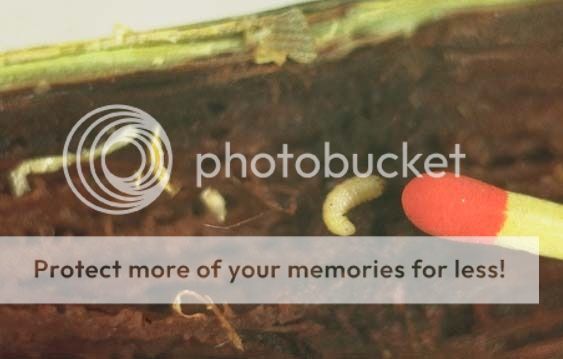Sorghum Insects
Sugarcane Rootstock Weevil, Apinocis deplanatus.

Adult weevil

Grub
If you are examining injury to small plants, you may notice some leaves exhibiting a pattern of round, scattered, pinpoint-sized holes. This could be feeding by sugarcane rootstock weevils. Look for tiny black weevils near affected plants. The larvae develop during the summer. By slicing into the base of mature plants later in the summer, you may see the very small, whitish grubs, usually located within a blackened or reddish cavity in the stalk close to where brace roots are attached.
Some damage to roots and weakening of the stalk are associated with larval feeding, but it usually is not serious unless plants are under drought stress. Without careful examination, injury can be confused with some types of herbicide injury.
This insect has been in Kansas for years, and inquiries surface from time to time. Concern is usually greatest among persons experiencing damage for the first time. Like all insects, infestations vary from year to year. We have received several reports of this pest in the last couple of years, but are not sure if populations are increasing or if people are just becoming more aware of the problem. Its biology is not well understood and it is hard to judge whether changing practices, such as no-till production, would have any effect on its behavior. Limited observations suggest that the intensity of infestation may increase in fields planted earlier. In addition to damaging plants in the field, weevils occasionally contaminate grain during harvest. Though weevils do not damage the grain, they are easily confused with grain-damaging species and can cause concern when the grain is delivered to the elevator. No controls are curently available for this pest.
Page last updated on 10/31/2013 by J.P. Michaud.